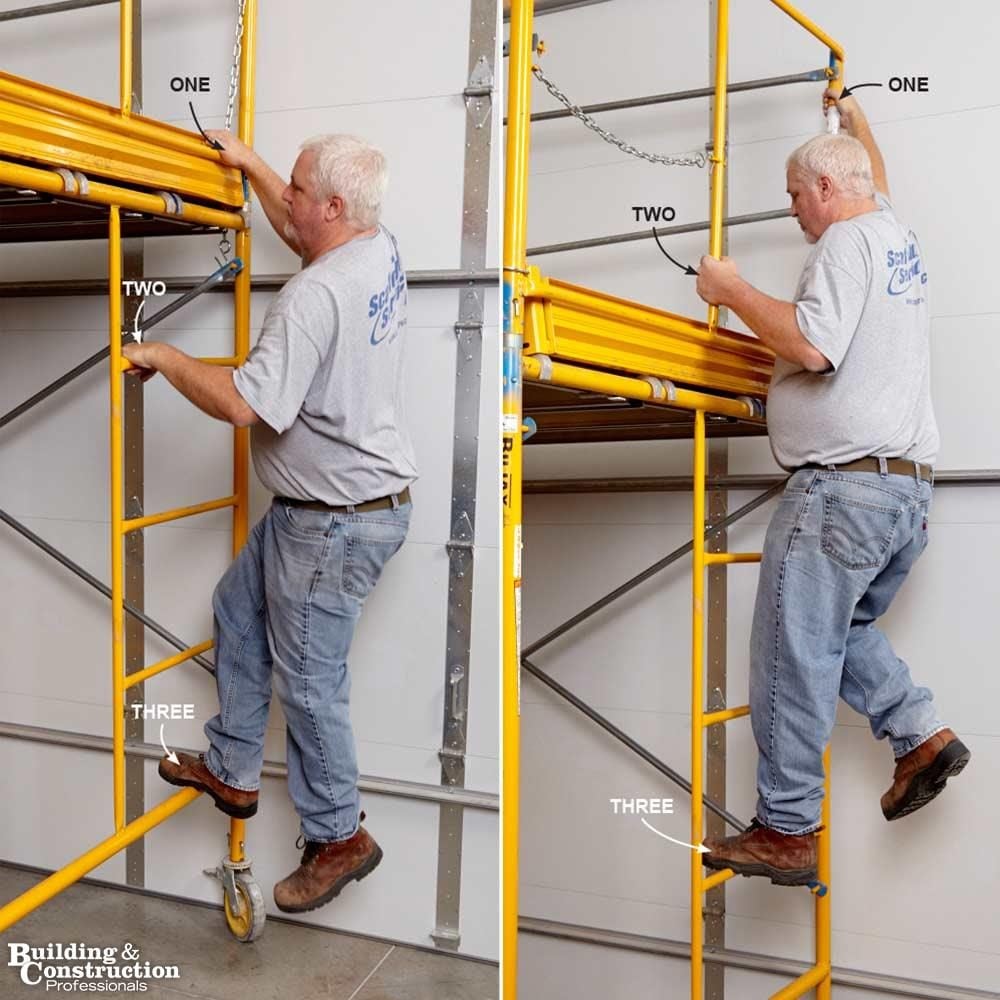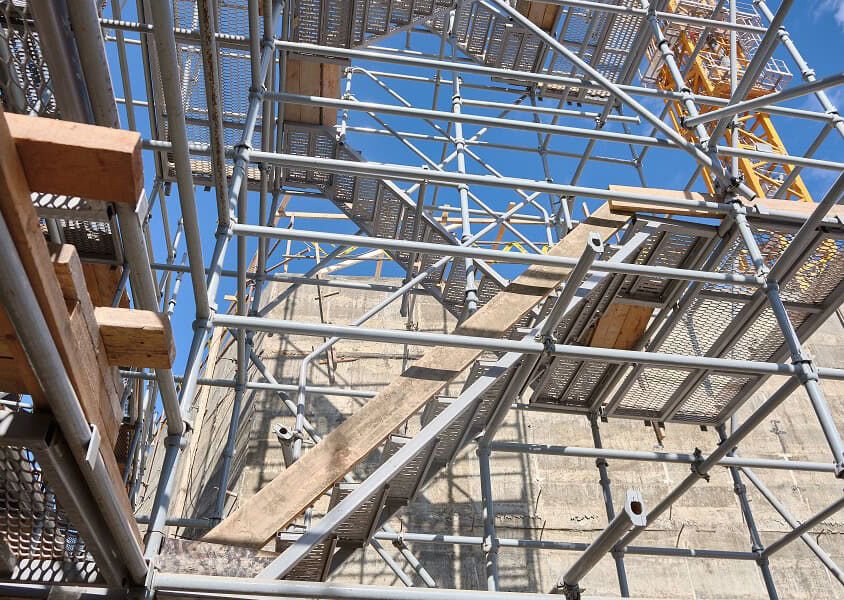Temporary Roof Scaffolding Experts Providing Secure and Reliable Installations
Temporary Roof Scaffolding Experts Providing Secure and Reliable Installations
Blog Article
Checking Out the Various Kinds Of Scaffolding Made Use Of in Building And Construction Tasks
The construction sector relies heavily on various types of scaffolding to satisfy specific task demands, each offering distinctive advantages and applications. Conventional structure scaffolding supplies a tough foundation for basic jobs, while suspended scaffolding is vital for job on skyscraper structures.

Traditional Frame Scaffolding
Standard structure scaffolding is among one of the most commonly made use of approaches in the building market because of its effectiveness and convenience. This system is composed of upright and straight frames that are assembled to produce a stable platform for employees and products. The major elements consist of upright articles, straight journals, and diagonal braces, which with each other give a strong framework that can support significant loads.
Among the crucial benefits of typical frame scaffolding is its versatility to various construction tasks, varying from domestic structures to big industrial frameworks. The modular layout enables easy setting up and disassembly, making it effective for both temporary and long-term tasks. Additionally, the system can be customized in height and width, accommodating various structure styles and website conditions.
Safety and security is vital in scaffolding applications, and standard framework systems are geared up with guardrails and toe boards to avoid falls and make certain employee defense. Additionally, routine inspections and adherence to safety and security guidelines are essential in preserving the integrity of the scaffold. In general, conventional structure scaffolding continues to be an essential selection in the construction market, giving a reliable system for labor and enhancing total job effectiveness

Suspended Scaffolding
Put on hold scaffolding provides a special solution for building and construction jobs that need access to elevated surface areas, particularly in circumstances where typical framework scaffolding may be unwise. This type of scaffolding is generally suspended from the roof covering or upper levels of a structure, making use of a system of ropes, systems, and pulley-blocks to develop a functioning area that can be adapted to different elevations.
One of the main advantages of put on hold scaffolding is its adaptability. It can be easily rearranged or decreased to suit adjustments in construction demands, making it excellent for tasks such as window setup, façade job, and upkeep on skyscraper buildings. Furthermore, the very little footprint of suspended scaffolding permits much better use of ground space in urban environments, where room is usually restricted.
Security is a critical consideration in making use of suspended scaffolding. Proper rigging and securing systems must be utilized to ensure stability and prevent mishaps. Operators should additionally be learnt the secure usage of this tools. Generally, put on hold scaffolding supplies a effective and effective remedy for accessing hard-to-reach areas in different building and construction circumstances, improving both efficiency and safety and security on site.
System Scaffolding
System scaffolding, commonly related to as a modern service in the scaffolding sector, consists of pre-engineered elements that can be rapidly set up and adapted for numerous building and construction tasks. Scaffolding. This kind of scaffolding is characterized by its modular design, which permits convenience and performance on task websites, suiting different heights and architectural demands
Generally made from high-strength steel or aluminum, system scaffolding offers improved resilience and stability. The components include vertical posts, straight ledgers, and diagonal click over here now dental braces, which adjoin safely, making sure a robust structure. The design often incorporates standardized installations, simplifying setting up and disassembly processes, therefore reducing labor time and prices.

Rolling Scaffolding
Moving scaffolding is a versatile option to traditional set scaffolding, made for wheelchair and convenience of usage on building and construction websites. This sort of scaffolding includes a system sustained by frameworks with wheels, allowing workers to easily transfer it as required. The movement function considerably boosts performance, as it decreases downtime connected with disassembling and setting up fixed scaffolding.
Typically built from lightweight materials such as light weight aluminum or steel, rolling scaffolding uses a tough yet portable remedy for projects requiring regular repositioning - Scaffolding. It is especially advantageous in jobs such as painting, drywall installment, and electrical work, where access to different elevations and locations is needed
Safety and security is vital in rolling scaffolding design, with features such as locking wheels to stop unintentional movement when in operation, and guardrails to shield employees from drops. Additionally, numerous versions are adjustable in elevation, accommodating numerous task requirements.
Cantilever Scaffolding

The layout of cantilever scaffolding typically includes making use of arms or brackets anchored to a building or framework, allowing the platform to extend exterior securely. Safety and security is paramount; thus, these scaffolds need to be engineered to stand up to ecological conditions and numerous loads. Routine inspection and maintenance are vital to ensure architectural integrity and employee safety and security.
Cantilever scaffolding is favored for its versatility and reliable use of room, making it a popular option in urban settings where space constraints are typical. Moreover, it helps with less complicated access to high altitudes, eventually adding to the general efficiency of building projects. Just like all scaffolding kinds, appropriate training and adherence to safety standards are essential for workers utilizing cantilever scaffolding.
Verdict
In verdict, the diverse kinds of scaffolding used in building and construction tasks each serve unique objectives customized to certain site requirements. Typical framework scaffolding gives stability, while put on hold scaffolding uses flexibility for raised jobs. System scaffolding facilitates quick assembly, and rolling scaffolding improves flexibility for differing job settings. Cantilever scaffolding successfully resolves challenges in city setups. Understanding these scaffolding kinds is important for optimizing safety and security and efficiency in see this here building, ultimately adding to the successful conclusion of projects.
Typical framework scaffolding gives a durable foundation for basic tasks, while suspended scaffolding is crucial for job on high-rise structures.Moving scaffolding is a flexible alternative to standard set scaffolding, made for wheelchair and convenience of usage on building and construction sites. As with all scaffolding kinds, appropriate training and adherence to security standards are critical for workers utilizing cantilever scaffolding.
Conventional framework scaffolding gives stability, while suspended scaffolding uses flexibility for raised tasks. System scaffolding facilitates fast setting up, and rolling scaffolding boosts mobility for differing job atmospheres.
Report this page